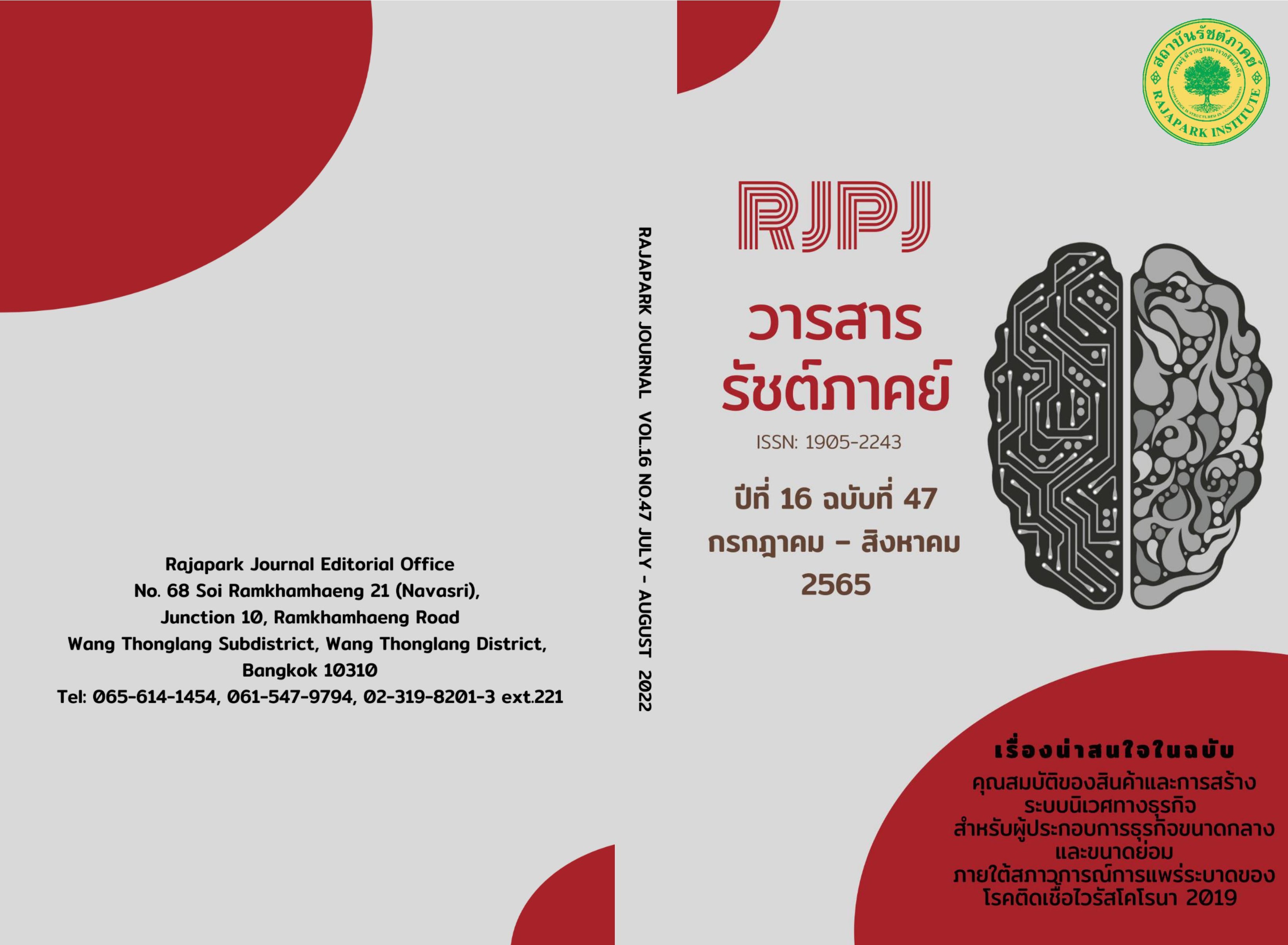New Paradigm in the Instructional Management of the Art Education Program of Higher Education Institutions
Main Article Content
Abstract
This research was qualitative research. The objectives were 1) to study the new paradigm in the instructional management of the art education program of higher education institutions; and 2) to analyze the components of the instructional management of the art education program of higher education institutions by using the EDFR (Ethnographic Delphi Futures Research) method of future research. The research process is divided into 2 steps: 1) interviewing those involved (EDFR round 1); and 2) having those involved complete a questionnaire (Delphi or EDFR round 2) assign experts from the specific selection according to the specified qualifications, totaling 17 people, divided into 3 groups, which were policymakers, 3 people, a group of people who play an academic role, 7 people from an autonomous university, and a group of 5 full-time teachers in the school. Data were collected by interviewing method. The data from the interview form were analyzed and synthesized to form a 5-level estimation questionnaire and Delphi was performed to confirm the data, respectively. The results showed that a new paradigm in the teaching and learning of art education programs at higher education institutions. It contains questions with a median of 3.50 or higher and an interquartile range of not more than 1.5, divided into sections as follows: curriculum aspect: 6 items; teachers’ side 11 items; instructional process 13 items; students aspect 14 items; measurement and evaluation, 7 items, and supporting factors, 7 items. Envision a new paradigm in the instructional management of the art education program of higher education institutions on 6 sides with 58 elements.
Article Details

This work is licensed under a Creative Commons Attribution-NonCommercial-NoDerivatives 4.0 International License.
Views and opinions appearing in the Journal it is the responsibility of the author of the article, and does not constitute the view and responsibility of the editorial team.
References
Kuhn, S. T. (2012). The Structure of Scientific Revolutions (50th Anniversary Edition) (4th ed.). The University of Chicago.
Ministry of Education. (2011). Standards of Qualifications for Bachelor's Degrees. Education and Education (Five Years Course). Ministry of Education.
Office of the Education Council, Ministry of Education. (2017). The National Education Plan B.E. 2560-2579 (2017–2036). Office of the Education Council.
Phaetlakfa, C. (2020). Faculty of Fine Arts, Srinakharinwirot University. Interview. March 21.
Pongsamart, C. (1983). Art for High School Teachers. Charoenwit.
Poolpatarachewin, P. (2008). Future Research. Journal of the Association of Researchers, 13(2), 9-13.
Somdee, W. (1985). Art Education. Encyclopedia of Education, 2, 112-114. http://ejournals.swu.ac.th/index.php/ENEDU/article/view/6416/6047
Suriyawong, S., Ruangsri, S., & Setthawong, P. (2001). Educational Research Methodology (2nd ed.). Academic Promotion Center.
Suthiphan, A. et al. (1972). Arts Education. Sansuksa.
Tantayanon. R. (2016, March 29). Technology Paradigm. Bangkokbiznews. https://www.bangkokbiznews.com/blogs/columnist/112185
Thephasadin Na Ayudhya, W. (2001). Development of Teaching and Learning in Higher Education (2nd ed.). Chulalongkorn University.
Wasi, P (1997). A New Paradigm in Development. Documents of Workshops for Those Responsible for Production and Development of the NSC and the Colleges Under the NMU.
Wongyai, W. (1980). Creative Activities for Preschool Children, Learning Materials. Faculty of Education, Srinakharinwirot University.
Wongyai, W. (1999). A New Paradigm: Educational Management for Human Potential Development. Faculty of Education, Srinakharinwirot University.


